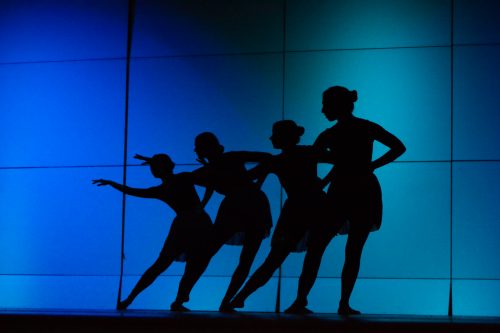 Hug a cactus. Jump out of a bucket. Avoid the “dirty diaper” syndrome. What do these actions have to do with ballet? Surprisingly, these and other unballetic images help me remember ballet technique. I find that the most memorable instructions in class are those that relate to something in real life. Different teachers’ aesthetic tastes and senses of humor have led to vivid, sometimes funny but always helpful ideas for learning and correcting steps. Here are some of my favorites:
Hug a cactus. Jump out of a bucket. Avoid the “dirty diaper” syndrome. What do these actions have to do with ballet? Surprisingly, these and other unballetic images help me remember ballet technique. I find that the most memorable instructions in class are those that relate to something in real life. Different teachers’ aesthetic tastes and senses of humor have led to vivid, sometimes funny but always helpful ideas for learning and correcting steps. Here are some of my favorites:
Barre work
Circular porte de bras: While stretching and extending your body, think of drawing a large circle with your head.
Arms in second position: Rainwater should be able to run from your shoulders down the arms and off of the second fingers; keep your elbow up and not sagging (or the rainwater will run off of your dipped elbow).
Hands: Keep the thumb in line with the middle finger, as if you were holding a thin sandwich, like a cucumber tea sandwich at Downton Abbey. Speaking of Downton Abbey…
Ballet arms vs. Downton Abbey arms: Remember how Cora, Mary, Edith and Sybil Crawley received guests at their stately mansion? The ladies always stood with fine posture and straight arms that hung relaxed at their sides. To achieve ballet arms, think Downton Abbey arms — but then raise them up to belly button height, strong and curved yet with a soft, relaxed look.
Ballet feet vs. street feet: You have street feet when you stand in parallel; turn them out and voilà – you have ballet feet.
Arms in first position when on balance (for example, when in retire/passé): Hold your arms up in a strong circle, not drooping like you are cradling a baby or flower bouquet.
Plié: Keep both hips balanced and don’t tip them to make a “sexy” plié.
Battement en cloche: En cloche means “like a bell” think of your working leg swinging like a bell’s clapper ringing “ding dong”!
Rond de jambe en l’air: For a single rond de jambe, use your pointed working foot to draw a circle the size of an American dinner plate. For double rond de jambes, draw circles the size of European dinner plates.
Fondu: Melt like chocolate or cheese.
Frappé: Keep your frappés crisp (like a cold frappe drink) in movement. On the extension or brush out, strike the floor to make a sound as if you are trying to grab a barista’s attention.
Las Vegas: Right after a grand battement à la seconde, the dancer turns the working leg in, bends that knee and swings it across the body and under the barre in demi-plié. Then the dancer straightens the standing leg and turns out the working leg for another grand battement à la seconde. I couldn’t find any terminology to describe this common move, but once heard it described as a showgirl-like “Las Vegas”.
Center work
Arms in first position for pirouettes and turns: Pretend you are hugging a cactus, – obviously keeping arms rounded to avoid being pricked. Or imagine you are hugging a balloon (don’t pop it), an egg (don’t break it) or a beach ball.
Tour jeté: One instructor practiced tour jetés in a hallway to make sure she stayed straight during the entire step (the grand battement, the turn and the arabesque landing).
Petit jeté: Avoid the dirty diaper syndrome when executing petit jetés by jumping up, not side to side as if you were wearing an uncomfortable dirty diaper.
Echappé in flat shoes: When standing in fifth position, pretend you are inside of a short bucket; then plié, jump up and out over the sides of the bucket, plié in second position, and then jump back up and bring your feet back together over the sides of the bucket and land in the bucket in fifth position plié. One teacher suggested imagining that your legs and feet are drawing McDonald’s golden arches.
Sissonne: Think of your hips as car headlights; you always want them facing forward evenly. When you sissonne forward, pretend you are driving down a road — you want to stay square on the road while moving straight forward.
Waltz turn: Pretend you are flirting with a suitor at a ball. Brush the skirt (with the hand on the working side); turn halfway to look at your suitor and extend the other hand for a kiss. But because you are a coquette, pull back your hand as you turn away halfway to complete the full waltz turn.
And of course one who hasn’t heard, “Let’s hit the bar after barre!”
I love applying real-life ideas or everyday imagery to learning ballet steps and corrections. What other fun images or descriptions have helped you in class?
Image by Maria on Flickr used under Creative Commons CC BY-SA 2.0 license
__________________________________________________
